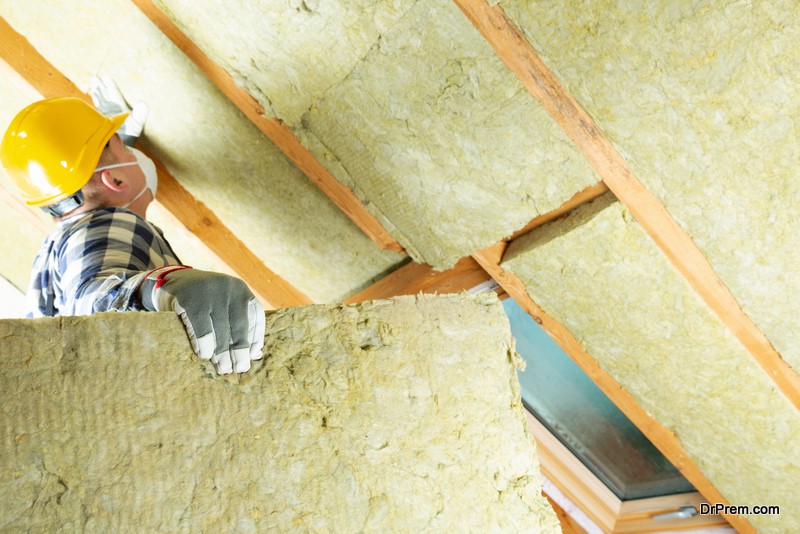<![CDATA[Choosing the most energy efficient attic insulation reduces energy bills and keeps your house cooler in the summer and warmer in the winter. Insulations are chosen depending on the climate. The measurement unit for this is called the ‘R-Value’, which is measured per inch thickness of the insulation and represents the insulation’s resistance to heat flow. The higher the R-value, the better the insulation and vice versa. A good insulation type should be energy efficient, affordable and work well during both summer and winter. More often, a good insulation not only insulates for thermal purposes but also against fire, sound, impact and acoustic insulations. There are four ways of insulation; i.e. cellulose blown-in insulation, Fiberglas blown in insulation, cotton fiber batt insulation and Fiberglas batt insulation.
Cellulose blow insulation is quick and inexpensive and seals air spaces better than batt insulation. It has a R-value of 3.8 per inch of insulation thickness.
Fiberglas blown insulation has an R-value of 2.3 to 2.8 per inch and as such is less resistant but cheaper than cellulose. Because of the health risks it poses to the lungs and skin during installation, it is best installed by a professional.
Cotton fiber batt insulation is an excellent insulator that is easy and safe to install and thus can be done by anyone. This insulation is removable and thus can be reused in future. It has an R-value of 3.7 and is environmentally friendly. It is much safer than Fiberglas but twice expensive.
Fiberglas batt insulation has an R-value of 3.1 to 4.2 depending on the needed density of insulation. Unlike the other three forms of insulation, Fiberglas batt insulation saves a lot on energy, making it a worthwhile investment. It’s the most energy efficient way of insulating an attic. Installing fiberglass batts requires a utility knife, safety glass, gloves, taping knife, straightedge, a dust mask and an insulation to fit depth of stud cavity. This insulation irritates hands and throat and thus the use of gloves and dust mask respectively.
For best installation, carefully fill all stud cavities with tight-fitting batts so that voids and gaps are completely eliminated. The batts are found in standard sizes but can be cut depending on the size and shape of the gap to be filled. One should be very accurate when cutting down these batts. Usually, slightly oversized batts are the best because they cover all space; small batts leave gaps and void.
Summary:
Insulation is important and available in a variety of options. Of course, each has its own benefits. Fiberglass batt insulation provides the best results, in terms of efficiency.]]>


